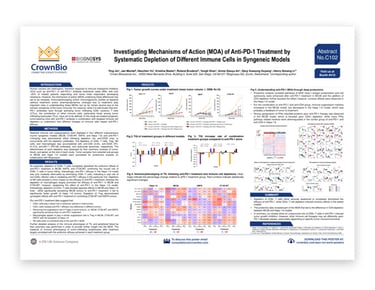Close
Search
Contact UsLanguageSearch
- Our Services
- Platforms
- In Vitro
- Cell Lines and Panels
- Humanized Target Tumor Cells (HuCELL)
- CRISPR/Cas9
- Organoids
- High Content Imaging
- In Vivo
- PDX Models
- CDX Models
- Syngeneic Models
- Humanized Models
- Humanized CDX Models (MiXeno)
- GEMMs
- Tumor Homograft Models (MuPrime)
- Orthotopics with Advanced Imaging
- Tumor Tissue Microarrays
- Human Biospecimens
- Biomarkers and Bioanalysis
- Data Science and Bioinformatics
- In Vitro
- Target Solutions BackExit
- Technologies
- Bioinformatics
- Preclinical Biomarker Discovery
- Genomics Data Analysis
- Protemoics Data Analysis
- Mouse I/O RNA-Seq Panel
- Cell Line Authentication with Deep Sequencing
- CrownSyn™
- Biomarker Analysis
- Biofluid Testing
- Cytokine & Chemokine Profiling
- Flow Cytometry
- Rare Cell Analysis
- Mass Spectrometry-based Proteomics
- CRISPR/Cas9
- Genomics
- Standard Genomics Services
- Next Generation Sequencing Services
- Cell Line Authentication (CLA) with Deep Sequencing
- Mouse I/O RNA-Seq Panel
- NGS Data Analysis
- In Vitro High Content Imaging BackExit
- Mass Spectrometry-based Proteomics
- Ex Vivo Patient Tissue
- Spatial Multi-Omics Analysis
- Bioinformatics
- Service Types
- Biomarker Discovery
- PDX Mouse Clinical Trial
- Biomarkers of Response: HuMark™
- Biomarker Discovery and Companion Diagnostics
- Signatures of Response: HuSignature™
- DMPK Services
- Efficacy Testing
- Laboratory Services
- Genomics and Transcriptomics
- Proteomics Services
- Spatial Biology and Digital Pathology
- Immune Monitoring
- Bioanalytical Services
- Pharmacology & Bioanalytical Services
- Biofluid Testing
- Rodent Immuno-Safety Models
- Safety Pharmacology Studies
- Structural Biology
- Target Validation
- Screens BackExit
- Toxicology
- Consulting
- Biomarker Discovery
- Platforms
- Our Science BackExit
- About Us
- Our Company
- Our Purpose
- Our Responsibility
- Leadership Team
- Scientific Advisory Board
- News & Events
- Awards & Testimonials
- Career Opportunities
- Contact us



